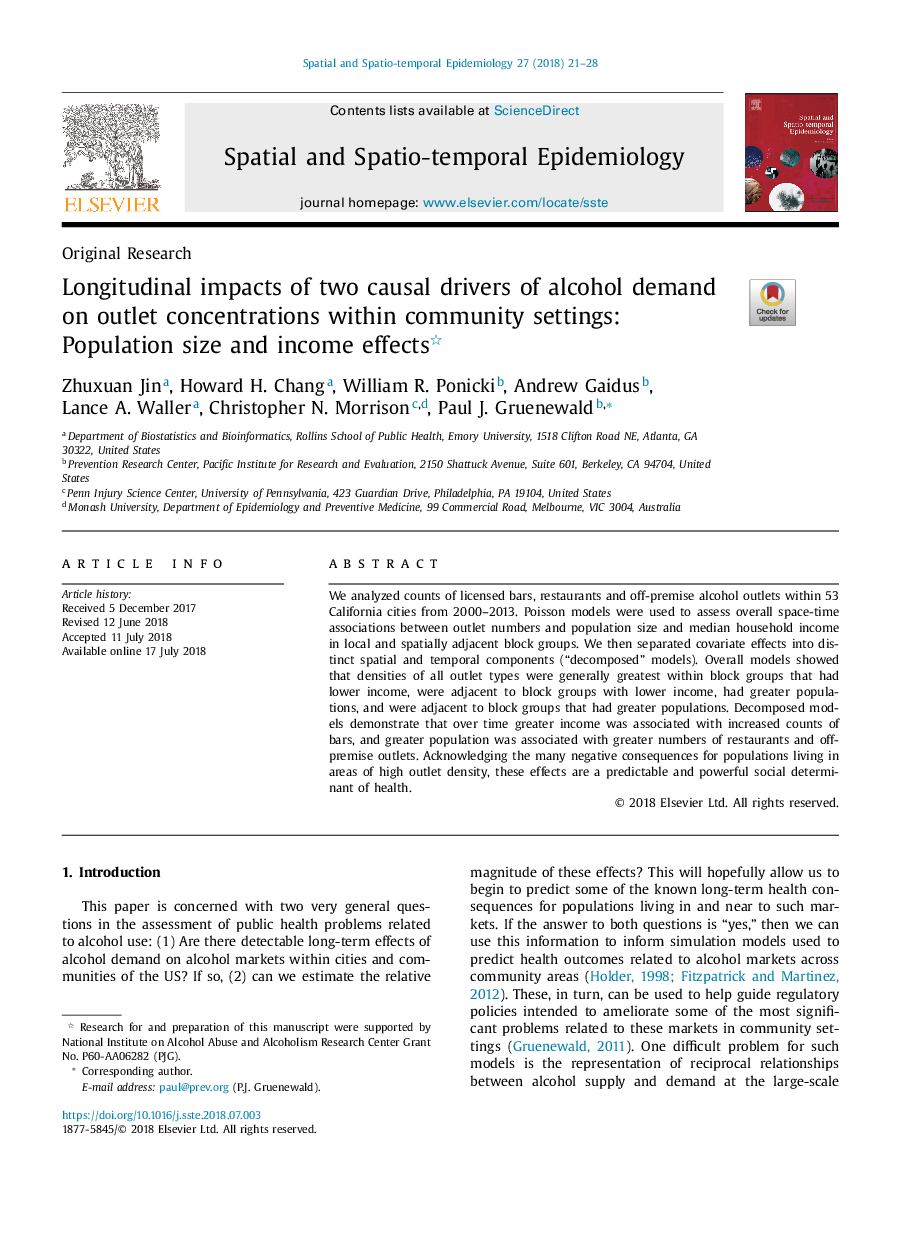| Article ID | Journal | Published Year | Pages | File Type |
|---|---|---|---|---|
| 9953244 | Spatial and Spatio-temporal Epidemiology | 2018 | 8 Pages |
Abstract
We analyzed counts of licensed bars, restaurants and off-premise alcohol outlets within 53 California cities from 2000-2013. Poisson models were used to assess overall space-time associations between outlet numbers and population size and median household income in local and spatially adjacent block groups. We then separated covariate effects into distinct spatial and temporal components (“decomposed” models). Overall models showed that densities of all outlet types were generally greatest within block groups that had lower income, were adjacent to block groups with lower income, had greater populations, and were adjacent to block groups that had greater populations. Decomposed models demonstrate that over time greater income was associated with increased counts of bars, and greater population was associated with greater numbers of restaurants and off-premise outlets. Acknowledging the many negative consequences for populations living in areas of high outlet density, these effects are a predictable and powerful social determinant of health.
Related Topics
Health Sciences
Medicine and Dentistry
Public Health and Health Policy
Authors
Jin Zhuxuan, Chang Howard H., William R. Ponicki, Andrew Gaidus, Lance A. Waller, Christopher N. Morrison, Paul J. Gruenewald,
